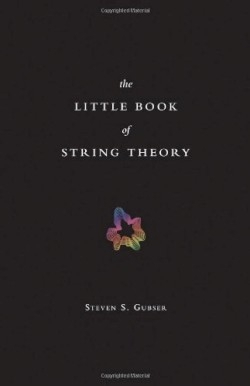The Little Book of String Theory
String theory is a term used to describe a group of theories relating to the shape of matter. Essentially, string theorists assert that all matter is made of one fundamental object—the string—and that differentiation of material comes from the different ways in which strings vibrate. Though this may seem like a simple idea, there are many complexities and mathematical formulas that are necessary to make string theory work. In The Little Book of String Theory, Steven Gubser provides a brief introduction to this complicated topic, and condenses an enormous amount of information into this “little book.” The author begins with fundamental concepts of physics, including energy, quantum mechanics, gravity, and black holes, which may bend readers’ minds more than they expect. For example, Gubser writes, “Time running at different rates in different places is gravity. In fact, that’s all gravity is…Things fall from places where time runs faster to where it runs slower. That downward pull you feel, and which we call gravity, is just the differential rate of time between high places and low places.”
Following this introduction, the author moves into a discussion of the main tenants of string theory. Branes, for instance, are like strings with any number of dimensions, and string dualities are “a duality relation between two apparently different string theories, or between two apparently different constructions in string theory.” This brings the reader up to date on current scientific thought. The final portion of the book is devoted to upcoming experiments and what scientists hope to find.
This is an excellent introduction to string theory for those who are looking for a highly academic explanation. The concepts are not always easy to understand, but Gubser, a faculty member at Princeton University with more than 100 articles to his credit, attempts to provide real world analogies for some of the most difficult ideas. He compares quantum mechanics to a piece of classical music: “Simple quantum systems, like the hydrogen atom, have frequencies that stand in simple ratios with one another. For example, the phase of one quantum state might cycle nine times while another cycles four times. That’s a lot like the four-against-three cross rhythm of [Chopin’s] Fantasie-Impromptu.” String dualities invite comparison to a waltz: “So S-duality is like Fred Astaire dancing with a slimy alien—Sorry, Fred. But this alien is actually just as good a dancer as Fred, in its own way. We just can’t appreciate what it is doing.” For those new to string theory, this book is full of information and humor and will help readers see the universe in an entirely new way.
Disclosure: This article is not an endorsement, but a review. The publisher of this book provided free copies of the book to have their book reviewed by a professional reviewer. No fee was paid by the publisher for this review. Foreword Reviews only recommends books that we love. Foreword Magazine, Inc. is disclosing this in accordance with the Federal Trade Commission’s 16 CFR, Part 255.

